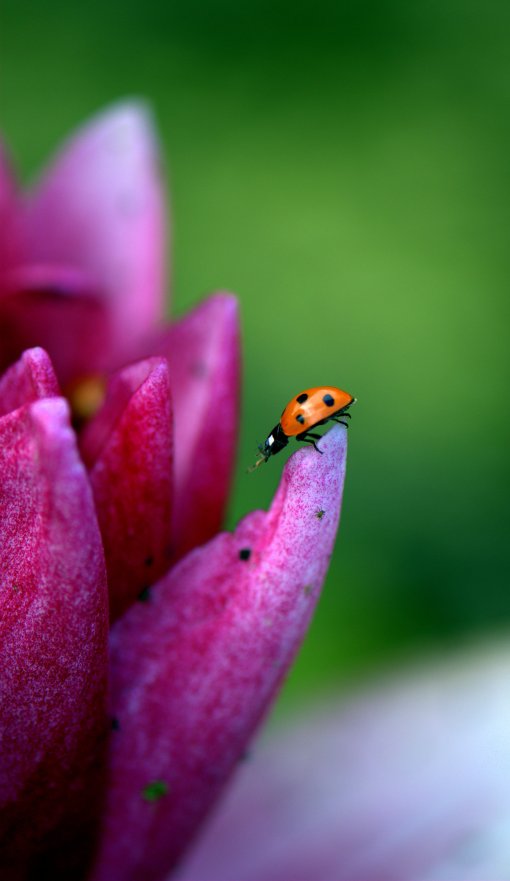Natural Pest Control – LadyBird Love!
Did you know the collective noun for a group of ladybirds is a ‘Loveliness’!? Quite appropriate I think. Though we just tend to think of our little friendly orange ones with black spots in the UK – the ‘7 spots’, there are others too joining us, which aren’t so friendly. So you need to be sure to get the right chaps if you’re using them as natural pest control.
Ladybirds belong to the scientific family Coccinellidae. In Britain, some 46 species belong to this family, although only 26 of these are recognisably ladybirds.The invasion of the harlequin ladybird (Harmonia axyridis) threatens our native populations. (If you want to know more about this species in particular, or want to record sightings, take a look at the Harlequin Ladybird Survey website.)
Leaving aside whether or not ladybirds are good or bad, there is no arguing that they are pretty little insects, and bring a sense of magic and fun when you come across them. There is quite a variance in colour amongst the small beasties, ranging from an ‘orange’ ladybird, Halyzia sedecimguttata, and several other pale pinky ones.Also worth noting is that the common 7-spot and 2-spot ladybirds are pale straw yellow or orange when they emerge from the pupa and change as they grow. It takes hours for the deep red colour to appear and they get darker for several days. The seven-spot ladybird is the most common in Britain. This bright red ladybird has seven spots and is thought to have inspired the name ladybird: “Lady” referring to the Virgin Mary (Our lady) who in early paintings is seen wearing a red cloak; the seven spots are symbolic of the seven joys and seven sorrows of Mary.
How do I use ladybirds as pest control?
Control Aphids outdoors by releasing Ladybirds and / orLacewing Larvae. Aphids (both greenfly and blackfly) are a big problem in gardens. Ladybirds and lacewings love to eat aphids, but they can be scarce. Help nature by introducing extra ladybirds (available as adults and larvae) and / or lacewing larvae into your garden from May onwards but which should I use?
- For light infestations on a spread of garden plants simply place adult ladybirds around the garden to search out the pests.
- For moderate infestations concentrated on a few plants use ladybird larvae placed directly onto the infected plants.
- For a bit of both use the ladybird family
- For heavier infestations use lacewing larvae or a gardeners friends pack (a pack of both lacewing larvae and adult ladybirds) placed directly onto the infected plants.
If you would like to buy some ladybirds as a natural pest control – check out www.greengardener.co.uk where you can buy a ladybird breeding kit!



















